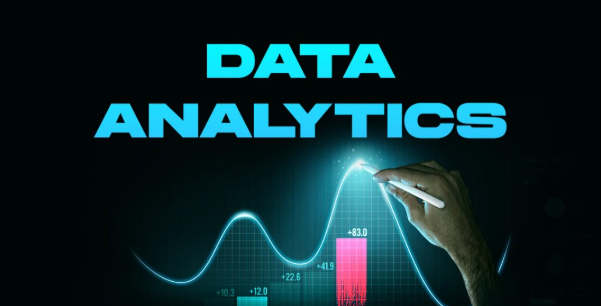Analyzing financial data is an important aspect of data science, particularly in predicting market trends, managing risks, and making informed investment decisions. Time series models includidng ARIMA, GARCH, and Holt-Winters play a significant role in forecasting financial data by identifying patterns and trends. Professionals actively looking to enhance their expertise in financial data analysis can benefit from enrolling in a Data Analytics Course, which provides hands-on experience with these models. Moreover, it offers specialized training in time series modeling, equipping analysts with the necessary skills to interpret financial data effectively.
Understanding Time Series Analysis in Financial Data
Time series analysis involves examining data points collected at regular intervals to detect underlying patterns and make future predictions. Financial data, including stock prices, exchange rates, and interest rates, are inherently temporal, making time series models essential tools for forecasting. By leveraging statistical methods, analysts can extract meaningful insights from past trends and apply them to future scenarios.
A well-structured data analyst course introduces time series fundamentals, enabling analysts to apply appropriate models for different financial datasets. Understanding these models is crucial for businesses, traders, and financial institutions seeking to optimize their decision-making processes.
ARIMA Model: Predicting Trends in Financial Markets
The AutoRegressive Integrated Moving Average methodl is a commonly used statistical approach for time series forecasting. It is particularly effective for financial data with observable trends and seasonal patterns. ARIMA combines three key components: autoregression (AR), differencing (I), and moving averages (MA). By adjusting these parameters, analysts can build accurate models that capture time-dependent structures in financial data.
An essential aspect of learning ARIMA is identifying stationarity in time series data, as the model performs optimally when data remains consistent over time. Analysts often apply transformations like differencing to achieve stationarity. A data analytics course in Mumbai covers practical applications of ARIMA, ensuring that analysts can develop and fine-tune models tailored to financial datasets.
GARCH Model: Measuring Market Volatility
The Generalized Autoregressive Conditional Heteroskedasticity model is essential for analyzing financial market volatility. Unlike ARIMA, which focuses on trends, GARCH models capture fluctuations in market movements. This makes them particularly useful for risk assessment and portfolio management.
GARCH models estimate conditional variance by considering past variances and residual errors. This approach is widely used in financial markets to model asset price volatility, helping traders and investors make informed decisions. Mastering GARCH requires a strong foundation in statistical modeling, which can be acquired through a data analyst course that provides real-world case studies and applications.
Holt-Winters Method: Forecasting Seasonality in Financial Data
The Holt-Winters method, also known as the triple exponential smoothing technique, is highly effective for analyzing financial data with strong seasonal patterns. Unlike ARIMA and GARCH, which focus on trends and volatility, Holt-Winters emphasizes seasonality, making it suitable for economic indicators, retail sales, and stock price fluctuations influenced by cyclical patterns.
Holt-Winters consists of three components: level, trend, and seasonality. By adjusting these parameters, analysts can generate accurate short-term forecasts. A data analytics course in Mumbai provides practical training on applying the Holt-Winters method, allowing analysts to develop skills in handling seasonality-driven financial data effectively.
Selecting the Right Time Series Model for Financial Data
Choosing the appropriate time series model depends on the characteristics of financial data. ARIMA is best suited for data with clear trends but limited volatility, while GARCH is preferred for highly volatile market conditions. Holt-Winters is ideal when seasonality plays a significant role in financial fluctuations.
Understanding these distinctions is critical for financial analysts and traders who need to make data-driven decisions. Enrolling in a data analyst course ensures that professionals gain hands-on experience in selecting and implementing the right time series models for various financial datasets.
Preprocessing Financial Data for Time Series Analysis
Before applying time series models, preprocessing financial data is essential for ensuring accuracy. This includes handling missing values, detecting outliers, and transforming non-stationary data into a stable format. Analysts often use logarithmic transformations or differencing techniques to achieve stationarity, which is crucial for effective model performance.
A data analytics course in Mumbai provides in-depth training on data preprocessing techniques, ensuring that analysts can prepare financial data effectively before applying ARIMA, GARCH, or Holt-Winters models. Proper preprocessing leads to more reliable forecasts and reduces the risk of misleading interpretations.
Evaluating Time Series Models for Accuracy
Once a time series model is applied, evaluating its performance is necessary to ensure accuracy. Metrics for instance Mean Absolute Error, Mean Squared Error ,and Root Mean Squared Error help measure the reliability of forecasts. Analysts also use residual diagnostics to check for patterns that might indicate model inefficiencies.
A well-designed data analyst course teaches professionals how to assess model accuracy, interpret evaluation metrics, and refine models for improved predictions. Continuous model evaluation and adjustment are key to maintaining high-quality financial forecasts.
Applications of Time Series Models in Financial Decision-Making
Time series models are extensively used in financial decision-making, from predicting stock prices to managing investment portfolios. ARIMA is commonly used for trend forecasting, while GARCH is vital for risk assessment in volatile markets. Holt-Winters is frequently applied in economic forecasting and demand planning.
Financial institutions, hedge funds, and investment firms widely rely on these models to optimize their strategies and minimize risks. A data analytics course in Mumbai provides practical exposure to these applications, preparing professionals to leverage time series models in real-world financial scenarios.
Conclusion: Mastering Time Series Analysis for Financial Success
Understanding time series models is essential for analyzing financial data accurately and making informed decisions. ARIMA, GARCH, and Holt-Winters each serve distinct purposes, from identifying trends and measuring volatility to capturing seasonal patterns. By mastering these models, analysts can provide valuable insights that drive financial success.
Enrolling in a data analyst course equips professionals with the skills needed to apply time series analysis effectively. Additionally, a data analytics course in Mumbai offers hands-on experience with real financial datasets, enabling analysts to develop expertise in forecasting and risk management. With the right training and tools, data analysts can truly unlock the full potential of financial data and contribute to data-driven decision-making in the financial industry.
Business name: ExcelR- Data Science, Data Analytics, Business Analytics Course Training Mumbai
Address: 304, 3rd Floor, Pratibha Building. Three Petrol pump, Lal Bahadur Shastri Rd, opposite Manas Tower, Pakhdi, Thane West, Thane, Maharashtra 400602
Phone: 09108238354
Email: [email protected]


